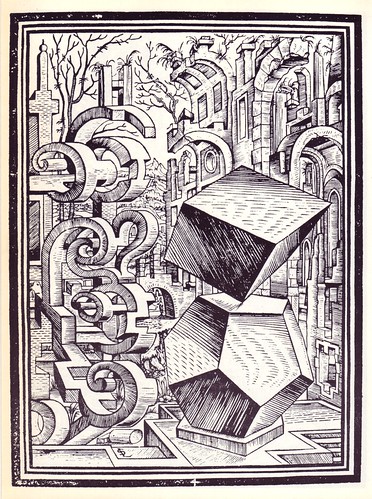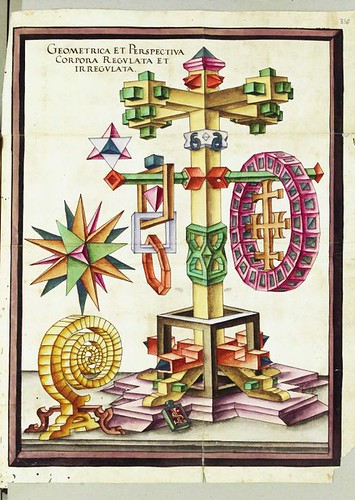I have often imagined what would have happened if mathematics concepts could be copyrighted. Newton developed differentiation and integration to complete his gravitational theory. What if he had realized that the idea is very valuable and had copyrighted it? All the other scientists would have had to use other methods for various problems or had to pay Newton to use it. Science would not have developed. Pure mathematics is actually a theory of different methods and the applications are used by physicists, economists, chemists, biologists and so forth. All intellectual development had suffered. In this case Leibniz was working on the same problem at the same time and there would have been a huge argument who actually got the original idea.
Luckily ideas can not be copyrighted. In the scientific world mathematicians publish their work for the benefit of everybody. When someone creates just a problem he may get his name in history like Fermat in
Fermat’s Last Theorem. Andrew Wiles has now proved the theorem but it just may happen that someone will create a much better proof and Wiles will be forgotten. Mathematics strives for the best solution and the person who provides that, gets his/her name in history.
?
KenKen is a mathematical puzzle. The goal of each puzzle is to fill a grid with digits so that no digit appears more than once in any row or column. Grids range in size from 3x3 to 9x9. Additionally, KenKen grids are divided into heavily outlined groups of cells and the numbers in the cells of each group must produce a certain given number when combined using a specified mathematical operation (either addition, subtraction, multiplication or division).

The image above is not a KenKen puzzle, it is Calcudoku. KenKen is now a registered Trademark of
Nextoy, LLC (as well as KenDoku) and the books containing KenKen’s are authored by
Tetsuya Miyamoto, and
Will Shortz; Kendoku books are authored by by
David Levy and
Robert Fuhrer;
Dj Ape used originally the title Square Wisdom; The Puzzle Society uses the name
Sukendo; The Kindle version is
Mathdoku and the puzzle above is a Conceptis made
Calcudoku, which name is also used by Dj Ape in the later books. The trademark does not prevent people from doing similar puzzles, it just prevents others calling them with the same name.
The abundance of different names is confusing for the general public and makes it more difficult to assess the overall popularity of the puzzle. When the Sudoku popularity was at the highest, we had many different Sudoku books and magazines available in Finland made by local puzzle makers. Now we don’t have a single KenKen (or Calcudoku) book available. If all those puzzles had the same name people would find them better and the mathematical challenge could find also people who are not puzzle addicts like me. I constantly meet mathematics teachers who never have heard of these puzzles. It will never reach the popularity of Sudoku.
Variants of SudokuActually KenKen is also one form of sudoku. It is also based on a
Latin Square which is an nxn table filled with n different symbols in such a way that each symbol occurs exactly once in each row and exactly once in each column.
Here are 2 examples of 5x5 Latin squares.
 Sudoku
Sudoku is a Latin square with an additional rule: The objective is to fill a 9?9 grid so that each column, each row, and each of the nine 3?3 boxes (also called blocks or regions) contains the digits from 1 to 9 only one time each. The puzzle setter provides a partially completed grid.

This puzzle is known to most people, because it became very popular and newspapers publish them daily even though the biggest boom is over. The amount of different Sudoku answers is of course smaller than that of 9x9 Latin Squares because of the 3x3 box rule. The amount of puzzles is bigger and depends on the givens, the numbers provided on the puzzle.
(For those who are interested on the mathematical calculations about the amount of Sudoku’s or the minimal amount of givens, I recommend the Wikipedia article on
Mathematics of Sudoku. It contains links to several mathematical articles about the subject.)
The classical Sudoku has the 3x3 boxes. The third rule can however be obtained in many ways and these puzzles are called Sudoku variants. Different lists of them can be found all over the internet. Some of the variants have made it to publications containing these variants; some of them are published regularly on Sudoku variants magazines, some others have been created just for examples. The longest list I found is made by
Uwe Wiedemann.
One not so know variant is Colour-Sudoku. This example is from
Added Bytes.

Here the third rule comes from the colours; every colour represents the “region” which has to contain each number only once. Here the region is totally spread all over the grid. The size would not have to be 9x9. The same arrangement could be obtained by any nxn grid.
Now Conceptispuzzles has published a new variation called
Chain Sudoku. The release article got a very angry response from
Strimko. Their puzzles have the same idea; the third rule defining the region is obtained by lines connecting the numbers. This variant has also different sizes. Here is an example of Conceptis Chain Sudoku.
 Battle
BattleNow Strimko says that the intellectual idea belongs to them. In some comments they also claim that the streams have not existed before and this idea is totally different from Irregular Sudoku.
Here is an irregular Sudoku, and this would make a Chain Sudoku very easily:

The Chain Sudoku contains one feature which irregular Sudoku doesn’t, the ability to link numbers diagonally.

However this is not a new idea even for Conceptis. In August 2006 Sterling published a book
Snakes on a Sudoku – official Snakes on a Plane Puzzle Book and the puzzles were created by Conceptis. Here is one scan from the book:

As you can see there is also the diagonal snake. Somehow the word stream describes these better than the previous ones. To me they look chains. The logic I use in solving both types is the same!
Mathematically speaking
I have also seen a more advanced approach to connecting the numbers, a Toroidal Sudoku:

In mathematics toroid is the doughnut-shaped object. These puzzles are scanned from a magazine BBC Mind Games Christmas 2006. This could really be clued to make a doughnut, but I think it’s better to solve it first. Dr Gareth Moore publishes these regularly on his
Puzzlemix website.
Mathematically speaking Strimko’s and Chain Sudoku’s are graphs, more precisely they consist of connected acyclic graphs which are called
trees. An
acyclic graph with multiple connected components is sometimes can be called a
forest.
There is also another puzzle closely connected to graph theory:
Hashi. The rules in Hashis are however totally different

As a conclusion to the above; any puzzle having the third rule in addition to the row/column –rule is just another variation in the Sudoku family. Conceptis has an algorithm to create Sudoku’s and Dave Green states in Conceptis Forums:
“To demonstrate how close these puzzles behave, it took us only several minutes to modify the algorithm and the graphical export of our Sudoku generator to enable it to produce Chain Sudoku puzzles.”
I have done some programming but my main interest is algorithms in general and I know that if the code is written using good programming, the changes are easy.

I think I answered this question.
Gareth Moore's Colour SudokuThere is still the design, but even there Strimko is not totally original. Here is another Sudoku from Gareth Moore which uses colours instead of numbers:

My love of logical puzzles started originally from my main interest, mathematics. I think logical puzzles are very good in learning logical thinking which is a very important skill in mathematics. Puzzles are not as threatening to students as mathematics sometimes seems to be. To me it is a very sad thing that copyright issues get in the way of making these puzzles publicly known. Sudoku’s became popular because the Japanese puzzle company Nikoli, which created the name Sudoku, never trademarked it outside Japan. (Nikoli did not invent the puzzle).
Crediting Strimko
Some of the comments have been criticizing that Conceptis does not give the credit to Strimko. With all the puzzle types Conceptis has provided info about the history of the particular puzzle and I have no doubt they would have made it this time also but quoting Serhiy Grabarchuk in Conceptis Forums:
"Some months ago I warned Conceptis Puzzles that if they will use the idea of Strimko (under any name) with the same features as our Strimko, we will understand that as a direct and clear infringement of our intellectual property rights."
I hope there will be some solution to this. I wrote my opinion to my blog because I see no point in joining all the puzzling forums Strimko has left their accusations. Those who are interested in them can use Google to find them. If Conceptis decides to drop out this puzzle, I will not solve them. I want to find my puzzles on the same website. I have too many links to various social media sites and educational sites as it is!



![Reblog this post [with Zemanta]](http://img.zemanta.com/reblog_e.png?x-id=ae3db2f5-b0b7-87a3-9633-7d061e624b98)
![Reblog this post [with Zemanta]](http://img.zemanta.com/reblog_e.png?x-id=49c39137-eb06-4954-adcb-33be9152ee44)







![Reblog this post [with Zemanta]](http://img.zemanta.com/reblog_e.png?x-id=11f91c8c-cb54-4b62-b5dd-b44ee8d67789)




































